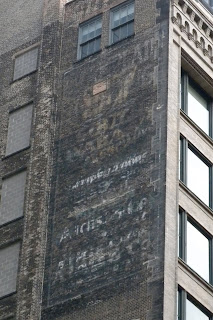The magnitude of the 1986 flood had a deep impact on the museum's institutional memory. At the time, the museum was digging a massive hole adjacent to the building to create new basement storage space. The Chicago Park District, capable as ever, was only able to provide the museum's contractors with a rudimentary sense of where the water mains were located. Of course, the backhoe being used to dig the hole struck the main, unleashing a geyser of water that quickly began to fill the enormous trench. Further demonstrating their aptitude, Park District officials needed over three hours to find the controls to shut off the water flow, by which point the hole had filled with an estimated half million gallons of water. The tremendous pressure was more than the building's foundation could handle, and it gave way, filling the existing basement with water and mud. Furthermore, the electrical current still flowing through the water caused the water to heat up, causing additional damage to the collection materials that were in its path. Thankfully, due to the renovation, many of the collection materials had already been moved from the basement, but the museum's collection of bound periodicals, architectural drawings, paintings, and sculptures were all soaked. Staff members, several of which still work at the museum, worked day and night for weeks to try to rescue the collection. It was for a disaster of this scope that the current staff were summoned to train today.
To simulate a flood, conservation staff filled kiddie pools and plastic tubs full of dirty water and submerged layers of books, papers, framed artwork, and small objects. We were taught about how to prioritize items to be rescued -- paper and books will weaken and dissolve and inks will be bleed and become illegible the longer they are exposed to water. Clothing and fabrics are also quite susceptible to water damage. Non-porous objects, such as plastics and ceramics, can be left in the water much longer while other items are being attended to, although wooden items require special controlled drying to prevent warping and splitting.
Conservators operated stations where they taught us rudimentary conservation techniques that would be helpful in case of emergency. Books must be rinsed to remove debris, squeezed of excess moisture, wrapped on three sides with wax or parchment paper to prevent covers from bleeding and sticking together, and packed tightly into crates with their spines alternating for compression to help hold their shape. The crates are then sent to freeze drying facilities. Papers must be carefully separated, rinsed, and laid between blotting papers to dry, and photographs are preserved the same way. Clothing is more complicated, as garments must be padded out with non-absorbent materials to help them maintain their shape, otherwise they will dry into contorted forms that are difficult to undo. Framed artwork must be disassembled and dried, lest water linger between the frame and the canvas and cause mold growth. In some cases, such as clothing and paper, items made be frozen to hold them in stasis until there is time for proper drying and conservation. During CHM's 1986 flood, for instance, Chicago-based food company Sara Lee donated industrial freezer space for object storage while items were being processed.

It was a fascinating exercise, and an interesting insight into the operations of the work of our conservation staff. There is not much fraternizing between different departments at the museum, so it was good to see what other people do with their time, and benefit from their expertise. My only complaint about the entire experience was that it was roughly two hours long, and was held outside in full sunlight on a humid, 90 degree day. By the end, nobody was volunteering for hands-0n experiences with the objects, and no one had any questions. People just wanted to get back to their air-conditioned desks. Even so, I'm glad I participated, as it definitely added a little much-needed excitement to an average day at the office.






 Located in the heart of the city, Holy Name's limestone structure is dwarfed by surrounding skyscrapers.
Located in the heart of the city, Holy Name's limestone structure is dwarfed by surrounding skyscrapers.





 This ad for Boston Stone is located in the heart of the Loop, visible from State and Washington. I've seen it many times but never taken a moment to photograph it.
This ad for Boston Stone is located in the heart of the Loop, visible from State and Washington. I've seen it many times but never taken a moment to photograph it. I spotted this one on Wabash, the nerve center for ghost signs in the Loop. I assume there are so many ads painted on the buildings because the El runs past them, and they haven't been painted over as in the rest of the city because Wabash has a general atmosphere of dodginess that isn't evident elsewhere.
I spotted this one on Wabash, the nerve center for ghost signs in the Loop. I assume there are so many ads painted on the buildings because the El runs past them, and they haven't been painted over as in the rest of the city because Wabash has a general atmosphere of dodginess that isn't evident elsewhere.
















